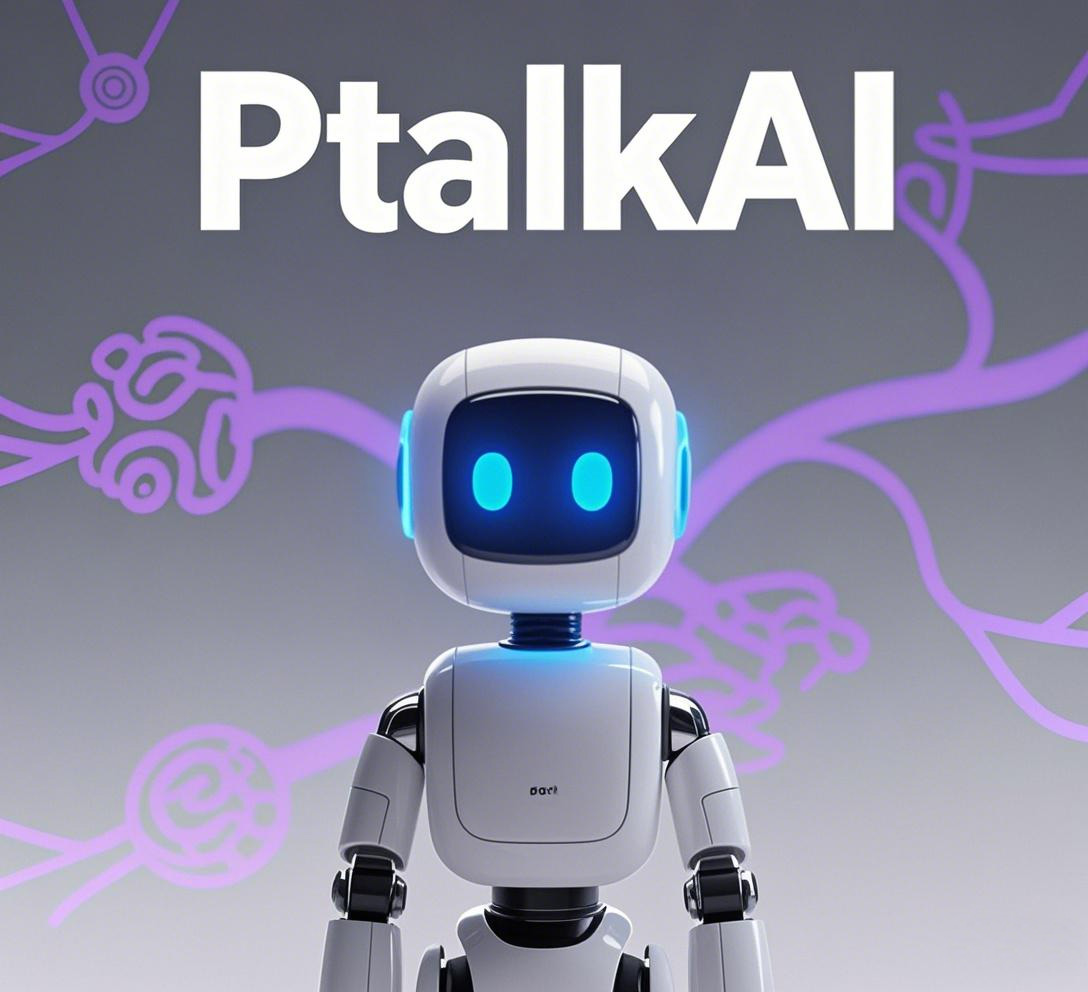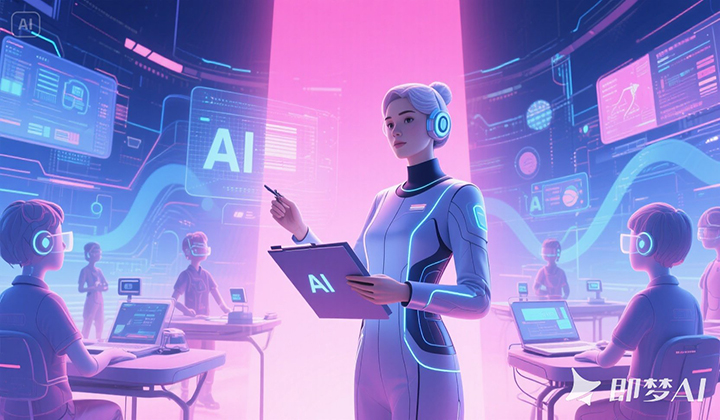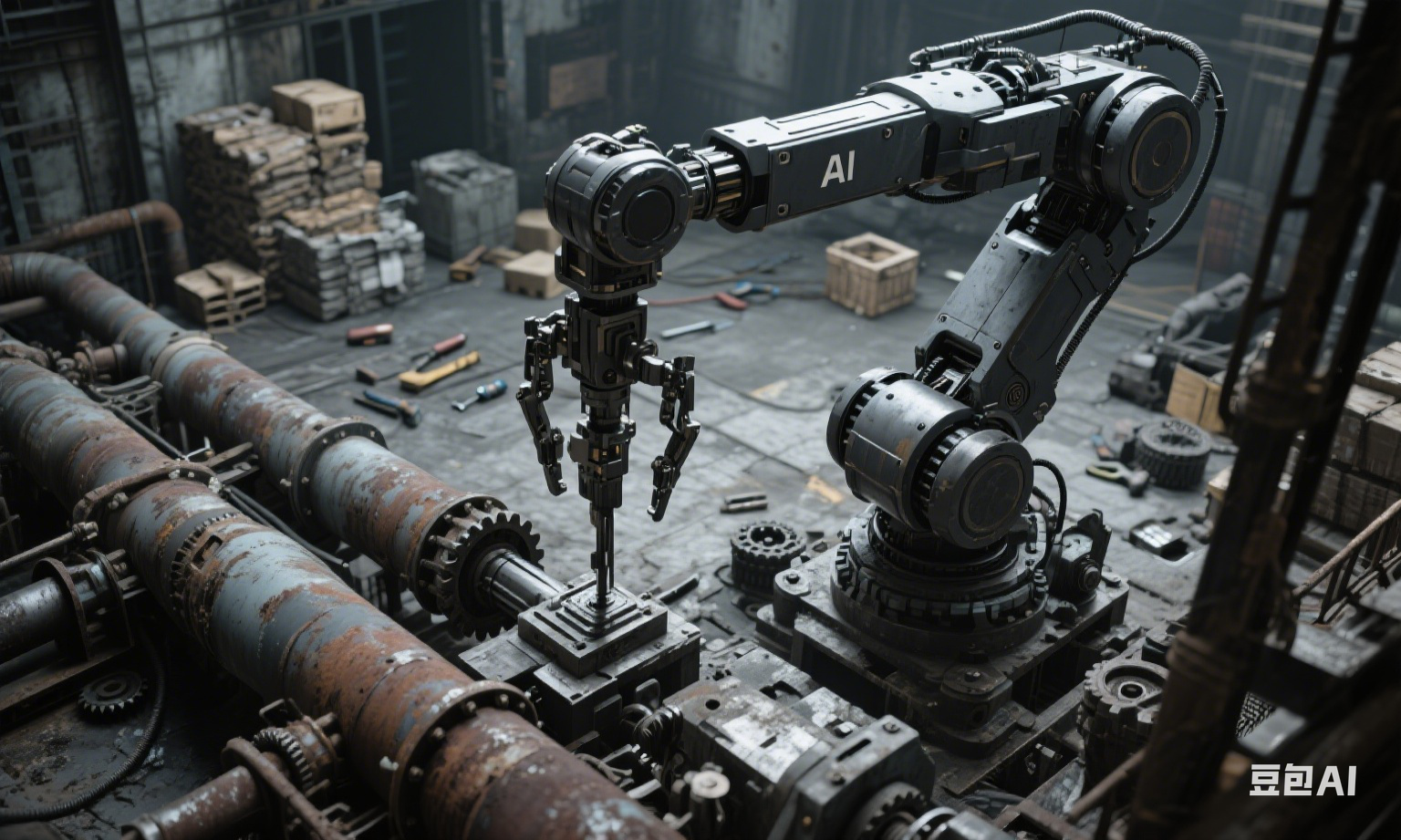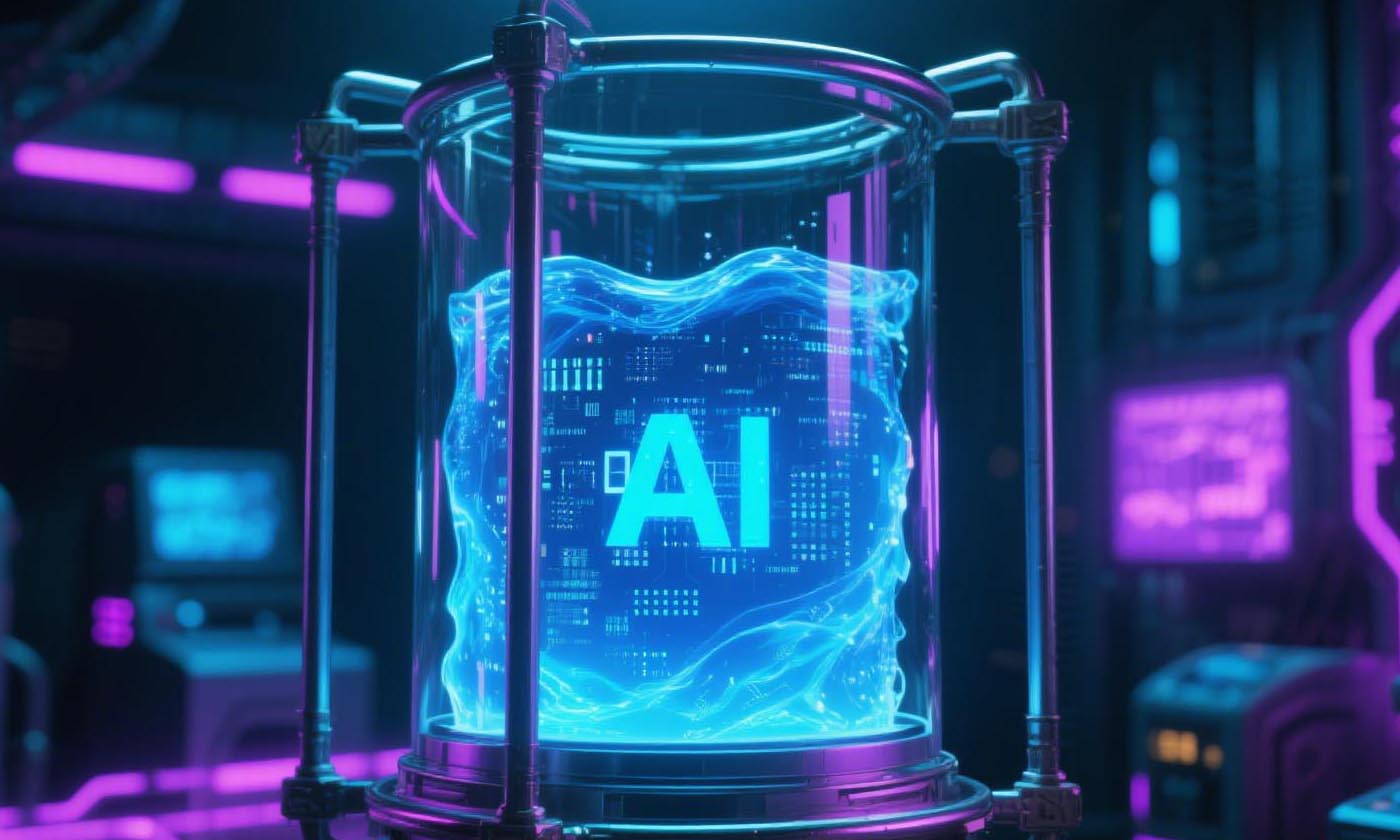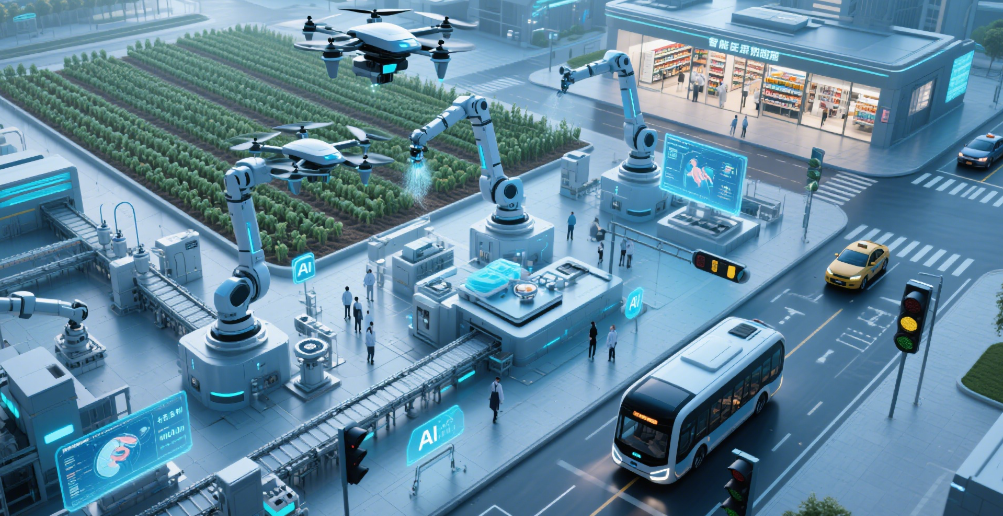Understanding AI and Its Impact on Everyday Life
The Rise of AI: Why It Matters to Everyone
Artificial Intelligence (AI) is no longer a futuristic concept confined to science fiction—it is now an integral part of our daily lives. Whether you realize it or not, AI influences the way we shop, communicate, work, and even make decisions. From the personalized recommendations on streaming platforms to the smart assistants in our phones, AI is quietly shaping the world around us. But what exactly is AI, and why should ordinary people care? The answer lies in its growing impact on every aspect of society.
At the heart of this AI revolution are large-scale AI models—powerful systems capable of processing vast amounts of data and generating human-like responses. Unlike traditional software that follows strict rules, these models learn from patterns in data, allowing them to understand and respond to complex queries. This means AI can now assist with tasks like writing emails, summarizing documents, creating content, and even offering medical advice. As these capabilities expand, AI is becoming an essential tool for both professionals and everyday users.
The importance of understanding AI goes beyond curiosity—it is becoming a necessity. In the near future, knowing how to leverage AI tools will be as fundamental as knowing how to use a smartphone or a search engine. Those who learn to harness AI effectively will gain a significant advantage in their personal and professional lives. Whether you're a student seeking study tips, a job seeker refining your resume, or a small business owner optimizing marketing strategies, AI can provide valuable support.
This article aims to demystify AI for the general public by explaining its core concepts in simple terms. We will explore how AI works, the differences between traditional AI and modern large-scale models, and the ways AI is already influencing our daily experiences. More importantly, we will provide practical tips on how anyone can start using AI tools effectively—without needing any technical expertise. By the end of this guide, you will have a clear understanding of why AI matters and how you can make it work for you.
Understanding AI and Large-Scale Models
Artificial Intelligence (AI) is a broad term that refers to machines designed to perform tasks that typically require human intelligence. These tasks include problem-solving, decision-making, language understanding, and even creativity. AI systems can be found in various forms, from simple rule-based programs that automate repetitive tasks to complex machine learning models that adapt and improve over time. However, one of the most powerful advancements in AI today is the development of large-scale AI models, also known as foundation models. These models are trained on massive datasets and can generate human-like responses, making them incredibly versatile across different applications.
To understand how these models work, imagine a vast library containing billions of books, articles, and conversations. A large-scale AI model is like a highly intelligent librarian who has read every single document in this library. When you ask a question, the AI doesn’t just retrieve a specific fact—it analyzes the patterns in the information it has learned and generates a response based on context. This process, known as natural language processing (NLP), allows AI to understand and generate text in ways that were previously impossible for traditional AI systems.
Unlike older AI models that followed rigid programming rules, large-scale models learn from data rather than being explicitly programmed. This learning process involves training the AI on vast amounts of text, allowing it to recognize patterns and relationships between words, sentences, and entire documents. Once trained, the model can be fine-tuned for specific tasks, such as answering questions, summarizing content, or even writing creative stories. This adaptability makes large-scale AI models incredibly powerful, as they can be applied to a wide range of industries, from healthcare and education to business and entertainment.
One of the most well-known examples of a large-scale AI model is the language model used by AI assistants like ChatGPT, Google Gemini, and Claude 3. These models can engage in conversations, generate detailed explanations, and even mimic different writing styles. Their ability to understand and produce human-like text has made them invaluable tools for content creation, customer service, and even personal productivity. However, despite their impressive capabilities, it is important to recognize that these models do not possess consciousness or independent thought—they simply analyze patterns in data to generate responses.
The difference between traditional AI and large-scale AI models lies in their complexity and adaptability. Traditional AI systems, such as rule-based chatbots or recommendation algorithms, rely on predefined instructions. For example, a basic AI chatbot might follow a set of if-then rules to respond to user queries, but it cannot handle unexpected inputs or learn from new data. In contrast, large-scale AI models continuously refine their understanding based on the information they process. This allows them to tackle more complex tasks, such as generating realistic dialogue, translating languages, or even assisting in scientific research.
Another key distinction is the scale of data these models can process. Traditional AI systems often work with structured data, such as databases or spreadsheets, where information is organized in a predictable format. Large-scale AI models, however, can handle unstructured data—text, images, and even audio—making them more flexible in real-world applications. For instance, while a conventional AI might struggle to analyze a patient’s handwritten medical notes, a large-scale model can interpret the text, identify key symptoms, and provide relevant insights.
In summary, large-scale AI models represent a significant leap forward in artificial intelligence. They combine vast knowledge with advanced language processing capabilities, enabling them to perform tasks that were once thought to be exclusive to humans. As these models continue to evolve, they will play an increasingly important role in shaping the future of technology, business, and everyday life. Understanding their capabilities and limitations is essential for anyone looking to harness their potential in practical ways.
How AI Is Already Reshaping Everyday Life
Artificial Intelligence is no longer a distant concept confined to research labs or science fiction movies—it is already embedded in our daily routines, often without us even realizing it. From the moment we wake up and check our smartphones to the way we navigate traffic, make purchases, or interact with customer service, AI is quietly working behind the scenes to enhance our experiences. Let’s explore some of the most common ways AI impacts our daily lives and how large-scale AI models are making these interactions more intuitive and efficient.
Personalized Recommendations and Content Curation
One of the most visible applications of AI in everyday life is personalized recommendations. Streaming services like Netflix, Spotify, and YouTube use AI algorithms to analyze your viewing and listening habits, then suggest content tailored to your preferences. These recommendations are powered by large-scale AI models that process vast amounts of data to identify patterns in user behavior. For instance, if you frequently watch crime documentaries, the AI will prioritize similar content in your recommendations. Similarly, online retailers like Amazon use AI to suggest products based on your browsing and purchase history, making shopping more efficient and personalized.
Smart Assistants and Voice-Activated Technology
Smart assistants such as Siri, Google Assistant, and Alexa have become household names, offering hands-free assistance with tasks like setting reminders, sending messages, and controlling smart home devices. These assistants rely on large-scale AI models to understand natural language and respond accurately to voice commands. Whether you're asking for the weather forecast or requesting a recipe, AI processes your speech, interprets the intent, and provides relevant information. The more you use these assistants, the better they become at understanding your preferences and adapting to your speech patterns.
Navigation and Traffic Optimization
When you use a navigation app like Google Maps or Waze, AI is constantly analyzing real-time traffic data to provide the fastest route to your destination. These apps leverage large-scale AI models to predict traffic congestion, accidents, and road closures, ensuring that you reach your location efficiently. Additionally, ride-hailing services like Uber and Lyft use AI to optimize driver availability, estimate arrival times, and even calculate fare pricing based on demand. Without AI, these services would struggle to provide the seamless experiences we now take for granted.
Customer Service and Chatbots
Many businesses use AI-powered chatbots to handle customer inquiries, reducing wait times and improving service efficiency. These chatbots can answer frequently asked questions, process orders, and even assist with troubleshooting technical issues. Unlike traditional automated phone systems that rely on fixed responses, modern AI chatbots use natural language processing (NLP) to understand and respond to user queries in a more human-like manner. For example, if you contact a bank’s customer service chatbot about a transaction issue, the AI can analyze your account history, identify potential problems, and suggest solutions—all within seconds.
Healthcare and Medical Assistance
AI is playing an increasingly important role in healthcare, from diagnostics to treatment recommendations. Many hospitals and clinics use AI-powered tools to analyze medical records, detect anomalies in imaging scans, and assist doctors in making more accurate diagnoses. For instance, AI models trained on thousands of medical cases can help identify early signs of diseases such as cancer, often detecting patterns that human eyes might miss. Additionally, AI-driven health apps can monitor vital signs, provide personalized fitness recommendations, and even offer mental health support through chat-based therapy platforms.
Education and Learning Support
AI is transforming the way we learn by providing personalized educational experiences. Online learning platforms like Coursera, Duolingo, and Khan Academy use AI to adapt lessons to individual learning styles, ensuring that students receive content tailored to their needs. Intelligent tutoring systems can assess a student’s progress, identify areas where they struggle, and offer customized exercises to reinforce understanding. Moreover, AI-powered writing assistants help students improve their essays by checking grammar, suggesting better phrasing, and even generating study summaries based on lecture notes.
Financial Services and Fraud Detection
In the financial sector, AI plays a crucial role in detecting fraudulent transactions and enhancing security. Banks and credit card companies use AI models to analyze spending patterns and flag suspicious activity in real time. For example, if someone suddenly makes a large purchase in a different country, AI can quickly identify the anomaly and alert the user or temporarily block the transaction. Additionally, AI-driven financial advisors help individuals manage investments by analyzing market trends and offering personalized portfolio recommendations.
Smart Home Devices and Automation
From smart thermostats that adjust room temperature based on your habits to AI-powered security cameras that recognize familiar faces, smart home devices are becoming increasingly intelligent. These systems use AI to learn user preferences and automate tasks for convenience. For instance, a smart refrigerator can track food inventory and suggest recipes based on available ingredients. Similarly, AI-powered lighting systems can adjust brightness based on time of day and occupancy, enhancing both comfort and energy efficiency.
As these examples illustrate, AI is already deeply integrated into our daily lives, often working seamlessly in the background to improve efficiency, convenience, and decision-making. Large-scale AI models are at the heart of these innovations, enabling machines to understand and respond to human needs in increasingly sophisticated ways. Understanding how AI influences these everyday experiences is essential for anyone looking to make the most of its capabilities.
Common Misconceptions About AI and Clarifying the Facts
Despite the widespread integration of AI into daily life, many people still hold misconceptions about its capabilities and limitations. Some believe that AI is an all-knowing, self-thinking entity, while others fear that it will completely replace human jobs. These misunderstandings can lead to either overconfidence in AI’s abilities or unnecessary skepticism about its usefulness. To make informed decisions about how to use AI effectively, it is important to address these common myths and clarify the reality of AI’s current state.
Myth 1: AI Can Think and Make Decisions Like Humans
One of the most persistent misconceptions about AI is that it possesses human-like intelligence and consciousness. In reality, AI models, including large-scale ones, do not think or reason the way humans do. Instead, they analyze patterns in data and generate responses based on statistical probabilities. For example, when an AI writes an essay or answers a question, it does not "understand" the topic in the way a human does—it merely identifies patterns in the data it was trained on and constructs a response accordingly. This means that while AI can generate coherent and sometimes insightful responses, it lacks true comprehension, emotions, or independent decision-making abilities.
Myth 2: AI Is Always Accurate and Reliable
Another common misconception is that AI is infallible and always provides correct information. In reality, AI models can make mistakes, especially when dealing with ambiguous or complex queries. Since AI relies on the data it was trained on, it can sometimes generate misleading or incorrect responses, particularly when faced with rare or novel situations. Additionally, AI models may inherit biases present in their training data, leading to skewed or unfair outcomes. For instance, an AI system used for hiring decisions might unintentionally favor certain demographics if the training data reflects historical biases. Therefore, it is crucial to approach AI-generated information with a critical mindset, verifying facts and cross-checking results when necessary.
Myth 3: AI Will Replace All Human Jobs
There is a widespread fear that AI will eventually take over human jobs, leaving millions unemployed. While AI has indeed automated certain tasks—particularly those involving repetitive data processing or pattern recognition—it is not designed to replace humans entirely. Instead, AI functions best as a tool that enhances human productivity rather than substitutes for it. For example, in fields like medicine, AI can assist doctors by analyzing medical scans and identifying potential issues, but the final diagnosis and treatment decisions still require human expertise. Similarly, in creative industries, AI can generate drafts or suggest ideas, but human intuition, originality, and emotional intelligence remain irreplaceable. The most effective approach is to view AI as a collaborator that can handle routine tasks, freeing up humans to focus on more complex and creative work.
Myth 4: AI Is Too Complex for Ordinary People to Use
Some people believe that AI is only accessible to experts with advanced technical knowledge. However, this is no longer the case. Thanks to user-friendly AI tools and platforms, anyone can now leverage AI without needing to understand the underlying technology. Whether it’s using an AI-powered writing assistant to improve an email, employing a chatbot to get instant answers, or utilizing AI-driven recommendations for shopping and entertainment, these tools are designed to be intuitive and easy to use. The key is to focus on practical applications rather than technical complexities, allowing users to benefit from AI without requiring specialized expertise.
By dispelling these misconceptions, individuals can develop a more realistic understanding of AI’s role in their lives. Rather than viewing AI as an all-powerful or threatening force, it is more accurate to see it as a powerful yet imperfect tool—one that can enhance productivity, provide valuable insights, and support decision-making when used wisely.
Practical Tips for Using AI Tools Effectively
Now that we’ve explored the impact of AI on daily life and clarified some common misconceptions, let’s dive into actionable tips for using AI tools effectively. Whether you want to streamline your workflow, enhance your learning, or simplify daily tasks, mastering a few key strategies can help you get the most out of AI. Below are some practical techniques to help you use AI tools efficiently and avoid common pitfalls.
1. Learn How to Ask the Right Questions
One of the most important skills when working with AI is knowing how to phrase your queries effectively. AI models generate responses based on the input they receive, so a vague or poorly structured question can lead to confusing or irrelevant answers. To get the most accurate and useful results, follow these guidelines:
- Be Specific: Instead of asking, “Tell me about climate change,” try asking, “What are the primary causes of climate change and their impact on global temperatures?” The more detailed your question, the better AI can tailor its response.
- Use Context: Provide background information when necessary. For example, instead of simply asking, “Write an email,” specify the purpose, tone, and target audience: “Write a professional email to a client explaining a project delay, using a polite and reassuring tone.”
- Break Down Complex Tasks: If you need help with a multi-step process, break it into smaller questions. Instead of asking, “Help me write a research paper,” start with, “Generate an outline for a research paper on renewable energy,” then ask for help expanding each section.
2. Use Templates and Prompts to Improve Results
Many AI tools allow you to use templates or prompts to guide the AI’s output. These structured formats help ensure that the AI understands your intent and produces a well-organized response. Here are some commonly used templates:
- Role-Based Prompts: Start with, “Act as a [role]…” to guide the AI’s tone and expertise. For example, “Act as a financial advisor and help me create a budget plan.”
- Chain-of-Thought Reasoning: Encourage the AI to explain its reasoning step by step by adding, “Think carefully and explain your reasoning before giving the final answer.”
- Iterative Refinement: If the AI’s initial response isn’t perfect, ask follow-up questions to refine it. For instance, after receiving a draft of an essay, ask, “Can you make this more concise?” or “Can you add more supporting evidence for this argument?”
3. Verify Information Before Relying on It
While AI can provide valuable insights, it is not infallible. Always double-check critical information before making decisions based on AI-generated content. Here’s how to verify AI responses effectively:
- Cross-Check with Reliable Sources: If the AI provides factual claims, verify them using trusted websites, books, or academic resources. For example, if the AI states a historical event occurred on a specific date, confirm it with a reputable history database.
- Ask for Citations: Some AI tools can provide references for their statements. If you’re using AI for research or academic purposes, ask, “Can you provide sources for this information?”
- Use Multiple AI Tools: Compare responses from different AI platforms to identify inconsistencies. If multiple AI models provide similar answers, it increases confidence in the accuracy of the information.
4. Customize AI Tools for Your Needs
Many AI platforms allow you to personalize settings or fine-tune responses based on your preferences. Take advantage of these customization options to enhance your experience:
- Adjust Tone and Style: Some AI tools let you choose the writing style, such as formal, casual, or creative. Select the appropriate tone based on your needs.
- Save Frequently Used Prompts: If you often use AI for similar tasks, save your favorite prompts for quick access. For example, if you regularly use AI to summarize articles, create a template prompt like, “Summarize this article in 100 words, highlighting key points.”
- Use AI for Repetitive Tasks: Automate routine tasks like drafting emails, generating reports, or organizing data. By delegating these tasks to AI, you can focus on more complex and creative work.
5. Avoid Over-Reliance on AI
While AI is a powerful tool, it is best used as an assistant rather than a replacement for human thinking. Always maintain a critical perspective and avoid blindly trusting AI-generated content. Use AI to enhance your productivity, but ensure that you retain control over decision-making and final outputs.
By following these practical tips, you can make AI an effective partner in your daily life, whether for learning, work, or personal productivity. The key is to approach AI with a clear purpose, ask well-structured questions, and verify information when necessary. With practice, you’ll find that AI can significantly streamline your tasks and improve your efficiency.
Navigating the Risks and Limitations of AI
While AI offers numerous benefits, it is essential to be aware of its risks and limitations. Understanding these challenges helps users make informed decisions and avoid potential pitfalls. One of the primary concerns is privacy. AI models often require access to large amounts of data to function effectively, which means users must be cautious about the information they input. Sensitive data, such as personal identification details, financial records, or confidential business information, should never be shared with AI tools unless they are fully trusted and secure. Even if a platform claims to protect user data, there is always a risk of unintended data leaks or misuse. Therefore, it is crucial to carefully review the privacy policies of AI services and avoid inputting sensitive information unless absolutely necessary.
Another critical issue is the accuracy of AI-generated information. While AI models can produce detailed and seemingly authoritative responses, they are not infallible. AI systems base their answers on patterns in the data they were trained on, which means they can sometimes generate incorrect or misleading information. For example, an AI might confidently provide an answer that sounds plausible but is factually wrong. This is particularly concerning in fields like medicine, law, or finance, where incorrect information could have serious consequences. To mitigate this risk, users should always verify AI-generated content against reliable sources. If an AI provides a medical diagnosis or legal advice, it is essential to consult a qualified professional before making any decisions. Additionally, users should be aware that AI models may have biases based on the data they were trained on, leading to skewed or unfair outcomes. Recognizing these limitations ensures that AI is used as a supplementary tool rather than an absolute authority.
Over-reliance on AI is another potential danger. While AI can significantly enhance productivity, excessive dependence on these tools may lead to a decline in critical thinking and problem-solving skills. Some individuals may start relying on AI for basic tasks like writing emails, making calculations, or even decision-making, which can weaken their ability to think independently. In professional settings, over-reliance on AI-generated content without proper review can result in errors, misinterpretations, or missed opportunities for creativity. To avoid this, users should treat AI as an assistant rather than a replacement. It is essential to maintain a balance by using AI to streamline tasks while still applying human judgment and expertise.
Finally, ethical considerations must be taken into account when using AI. Some AI-generated content, such as deepfakes or misleading text, can be used for deceptive purposes. Users should be mindful of how they apply AI tools and ensure they are not contributing to misinformation or unethical practices. Additionally, as AI becomes more integrated into society, discussions around accountability, transparency, and fairness become increasingly important. Users should stay informed about ongoing debates regarding AI ethics and consider the broader implications of their AI usage.
By understanding these risks and adopting responsible AI practices, users can harness the power of AI while minimizing potential downsides. Being mindful of privacy, verifying information, maintaining critical thinking, and considering ethical implications ensures that AI remains a beneficial and trustworthy tool rather than a source of harm or misinformation.
The Future of AI: Transforming Work, Learning, and Daily Life
As AI continues to evolve, its influence on everyday life will only deepen, reshaping how we work, learn, and interact with the world. In the coming years, AI will become even more integrated into various aspects of society, offering greater efficiency, accessibility, and innovation. Understanding these future developments can help individuals prepare for the changes ahead and make the most of emerging opportunities.
Enhanced Productivity and Automation in the Workplace
One of the most significant transformations will be the way AI reshapes the workplace. While some fear that AI will replace human jobs, the reality is that AI will likely act as a powerful assistant, automating repetitive tasks and allowing employees to focus on more strategic, creative, and interpersonal work. For example, AI-driven tools will handle data entry, document summarization, and customer service inquiries, freeing professionals to concentrate on decision-making and problem-solving. In industries like finance, law, and healthcare, AI will assist with research, analysis, and even decision support, making professionals more efficient without replacing their expertise.
Moreover, AI-powered collaboration tools will become more sophisticated, enabling seamless communication across teams and time zones. Virtual meetings will be enhanced with real-time transcription, language translation, and even AI-generated summaries, ensuring that participants can focus on discussion rather than note-taking. Companies will increasingly rely on AI to optimize workflows, predict market trends, and improve customer experiences, making AI literacy a valuable skill in the workforce.
Personalized and Adaptive Learning
Education will undergo a major transformation as AI enables personalized learning experiences tailored to each student’s needs. Traditional one-size-fits-all teaching methods will be replaced by adaptive AI tutors that analyze a learner’s progress, identify areas of difficulty, and adjust lessons accordingly. Whether someone is learning a new language, studying for exams, or acquiring professional skills, AI will provide customized guidance and real-time feedback.
Additionally, AI will play a crucial role in lifelong learning, making education more accessible to people of all ages. Individuals will be able to access AI-powered learning platforms that offer interactive lessons, generate personalized study plans, and even simulate real-world scenarios for hands-on practice. This shift will empower people to continuously upgrade their skills, making career transitions and professional development more achievable.
Smarter and More Intuitive Daily Experiences
Beyond work and education, AI will continue to enhance everyday life by making technology more intuitive and responsive. Smart home systems will become even more intelligent, anticipating user preferences and adjusting settings automatically. For instance, AI-powered appliances will learn household routines, optimizing energy usage, managing grocery orders, and even preparing meals based on dietary preferences.
Healthcare will also benefit from AI advancements, with AI-driven diagnostic tools becoming more accurate and accessible. Wearable devices will monitor health metrics in real time, providing early warnings for potential health issues. AI-powered virtual health assistants will offer personalized medical advice, helping individuals make informed decisions about their well-being without requiring constant visits to a doctor.
In transportation, AI will continue to improve autonomous driving technologies, making roads safer and reducing traffic congestion. Public transportation systems will use AI to optimize routes and schedules, ensuring more efficient and timely services. As AI becomes more integrated into daily life, individuals will need to develop a deeper understanding of how to interact with and benefit from these intelligent systems.
Preparing for an AI-Driven Future
To thrive in this evolving landscape, individuals must cultivate a mindset of continuous learning and adaptability. While technical expertise is not required for everyone, understanding how AI works and how to use it effectively will become an essential skill. Embracing AI as a tool for augmentation rather than replacement will empower individuals to harness its benefits while maintaining control over their decisions and creativity.
As AI continues to shape the future, staying informed and proactive about its developments will be key to navigating the changes successfully. By adopting AI as a supportive partner rather than a distant technology, individuals can unlock new opportunities, enhance their productivity, and improve their quality of life.






